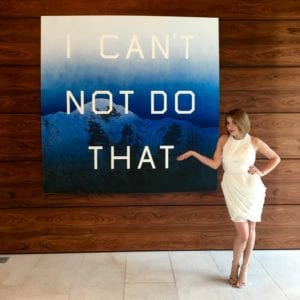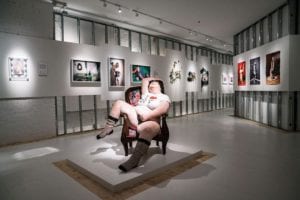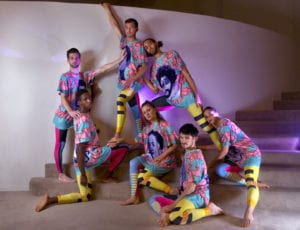For this month’s #artpowerwomen series, we sat down with Adrienne Elise Tarver, an interdisciplinary artist based in Brooklyn who’s installation Origin: Fictions of Belonging is creating a lot of Art Basel Miami buzz. Be sure to stop by PULSE art fair and experience Tarver’s piece in which she connects draping sheets of intersecting palms and leaves on wire mesh that hang from the ceiling. It’s not to be missed!
We picked Tarver’s brain about her work, being a feminist and why she is so drawn to the tropics.
HH: When AZ first profiled you in 2016, your work centered on the narrative of a character you based on a found photo named Vera Otis—from the Latin veritas—as a reminder that nothing presented in narrative is completely true. What’s Vera doing now?
AT: At that time, Vera was in the process of moving from the house featured in the “Eavesdropping” series. I don’t know exactly where she is going to end up after that move, but she’s in transition now, searching for a home and popping up in places that she’s connected to in some way. I think a lot about non-linear narratives and part of developing her narrative is connecting parts of her past to things that resonate with where she might be presently.
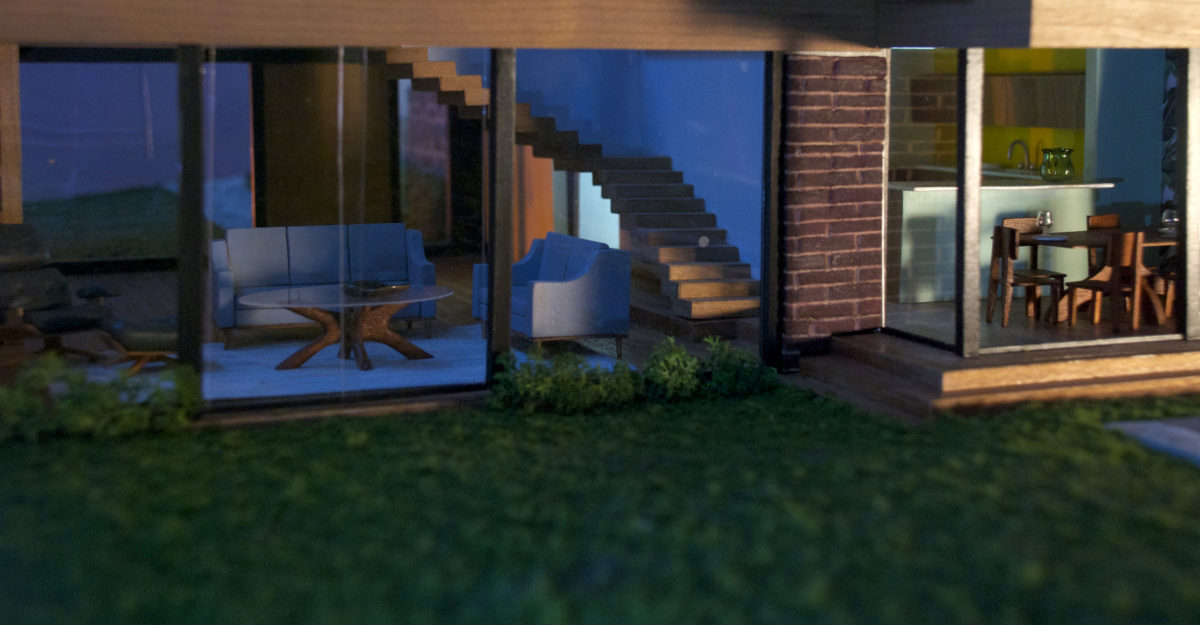
AZ: Miami or New York?
AT: New York–but you have to escape it every now and then to enjoy it.
HH: How has your exploration of voyeurism evolved?
AT: I still think about the role of the viewer, the boundary that turns someone into a voyeur, and the truth the voyeur will never know, but I’ve been more interested recently in the perspective of the viewed. I’m interested in the multiple perspectives that combined create the scenario of watching or being watched. I think a lot about how we hide or camouflage.
HH: In the post-truth era, when there’s tremendous social anxiety about what we can know with any certainty, your work could add to that anxiety. How does your practice offer us hope?
AT: I’m not sure I can offer hope. I hope to start conversations. One of the things I think about a lot is the cyclical nature of history–we repeat mistakes and revive ideologies, sentiments, desires, and fears. Truth, which is fickle and hard to pin down anyway, is easily lost as we cling to what is familiar. Since everyone has their own idea of truth, I think the first step is a conversation–listening, hearing different perspectives, searching for the other side of stories we’ve been told one way over and over again. I think just by being a black woman in America I’ve been aware as long as I can remember that the history books I grew up studying in school were leaving out a large part of the story. I think any artists’ practice that seeks to add more multi-dimensional stories into the world provides a starting point.
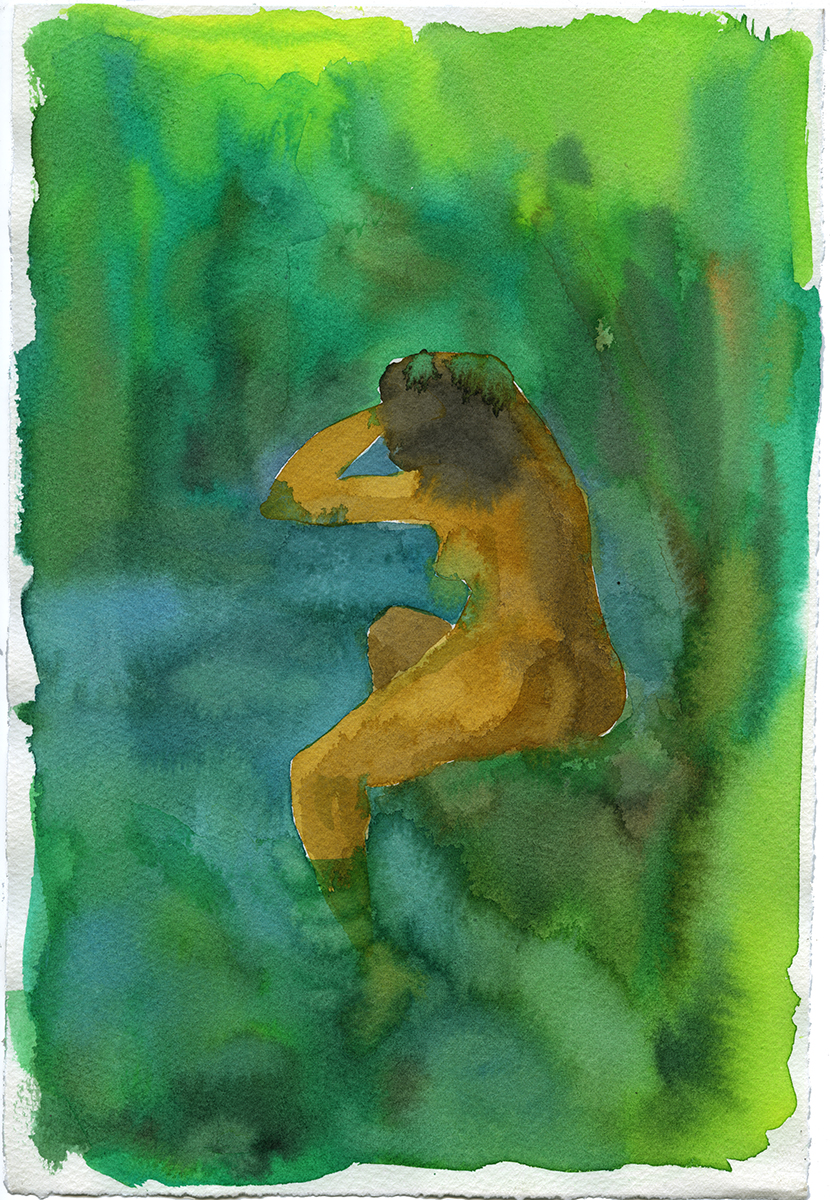
AZ: When is your favorite time to make art?
AT: I’m generally a morning person, but when I get into a groove in the studio I can stay pretty late.
BW: Your work right now is focused on the idea of the tropics. Why are the tropics so seductive to everyone?
AT: I think the tropics have an allure that’s hard to deny because the narrative that’s exported eliminates unsavory aspects of the history and reality of living there. It’s been distilled down to an idea of a place. We’re inundated with ads for islands that present these places as yours for the taking. Sun, sand, food and friendly locals are there for you, to provide you with an escape and to take your stress away. We accept this oversimplified idea of a place because we desperately want what the ads are offering. It’s easier than engaging with real current issues or traumatic pasts.When I was in high school, in the Chicago suburbs, I was at a hair salon that I had gone to for years. It was the middle of winter and a woman I had known for as long as I had been going there, and knew to be born and raised in that area, commented on how much she hated the cold Chicago winters and said, “We really are a tropical people, you know.” That sentence stuck with me because I think it speaks to a few different things: the desire to know a longer history of yourself than the one you’ve lived, the seduction of the tropics as a foil or cure to urban or suburban life, and a denial of traumatic and difficult realities of that history.
BW: You’ve been inspired by Paul Gauguin and Henri Rousseau. As a feminist and a woman of color, how do you navigate the work produced by white men who deliberately objectify women and glorify colonialism?
AT: I’ve grown up appreciating and in some cases really loving work by artists that I find very problematic now. I love Paul Gauguin’s paintings for example, but not his objectifying and fictionalized perspective of the tropics. I think it’s similar to what’s happening with the #MeToo movement and how we are grappling with the creative work of men in Hollywood who are being outed as predators. I don’t think the bodies of work by these men should be stricken from the record (erasing history is the easiest way to repeat these mistakes), rather I think they need to be counteracted and/or responded to by women, people of color, people of different sexual and gender orientations, and from varying perspectives. We can make problematic narratives smaller by elevating people and voices that have historically not been able to speak alongside them.
HH: You make work in many different media (paintings, video, collage, sculpture, photography, etc). Do you have a favorite and why?
AT: I’ll always identify as a painter first and foremost. Sometimes painting isn’t the medium I need at the time for the idea I have, but there’s always a painterly sensibility to what I’m doing. Whether that comes across in the color, composition, or materiality, it’s there just under the surface.
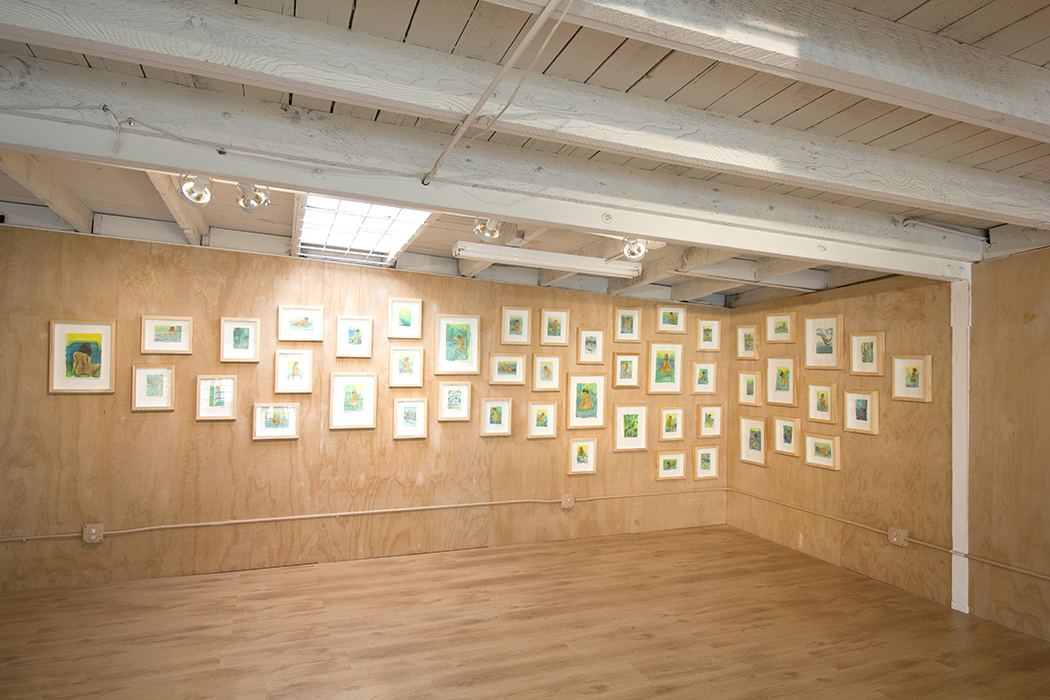
BW: You tend to work in either super large scale (like your current installation at PULSE) or super small scale (your current watercolor show at Ochi Projects). Why doesn’t there seem to be any in-between in your practice?
AT: I think it’s a matter of thinking about intimacy and confrontation. Voyeurism and truth have been constant themes in my work and both of those things operate fully and differently on these polar opposite scales. If I make a miniature and force you to look closely at the detail, you’ll enter that work with an intimate distance. Same with the watercolors and oil paintings at Ochi Projects right now–they entice you into an intimate relationship. But I’m also interested in the overwhelming seduction of a space–changing your perception due to shift in scale, saturation, material experience. In both the small-scale work and the large-scale installations there’s a question of your body and how it relates to the thing in front of you. That self-awareness is something I like to exploit.
AZ: If money was no object, what’s your dream project?
AT: I’ve been thinking a lot about public spaces and bringing the work into parks or large empty spaces. I’d love to do a very large hanging painting installation (similar in idea to “Origin” at PULSE currently) but I’d love to include performers and incorporate the wearable sculpture pieces I’ve been making.
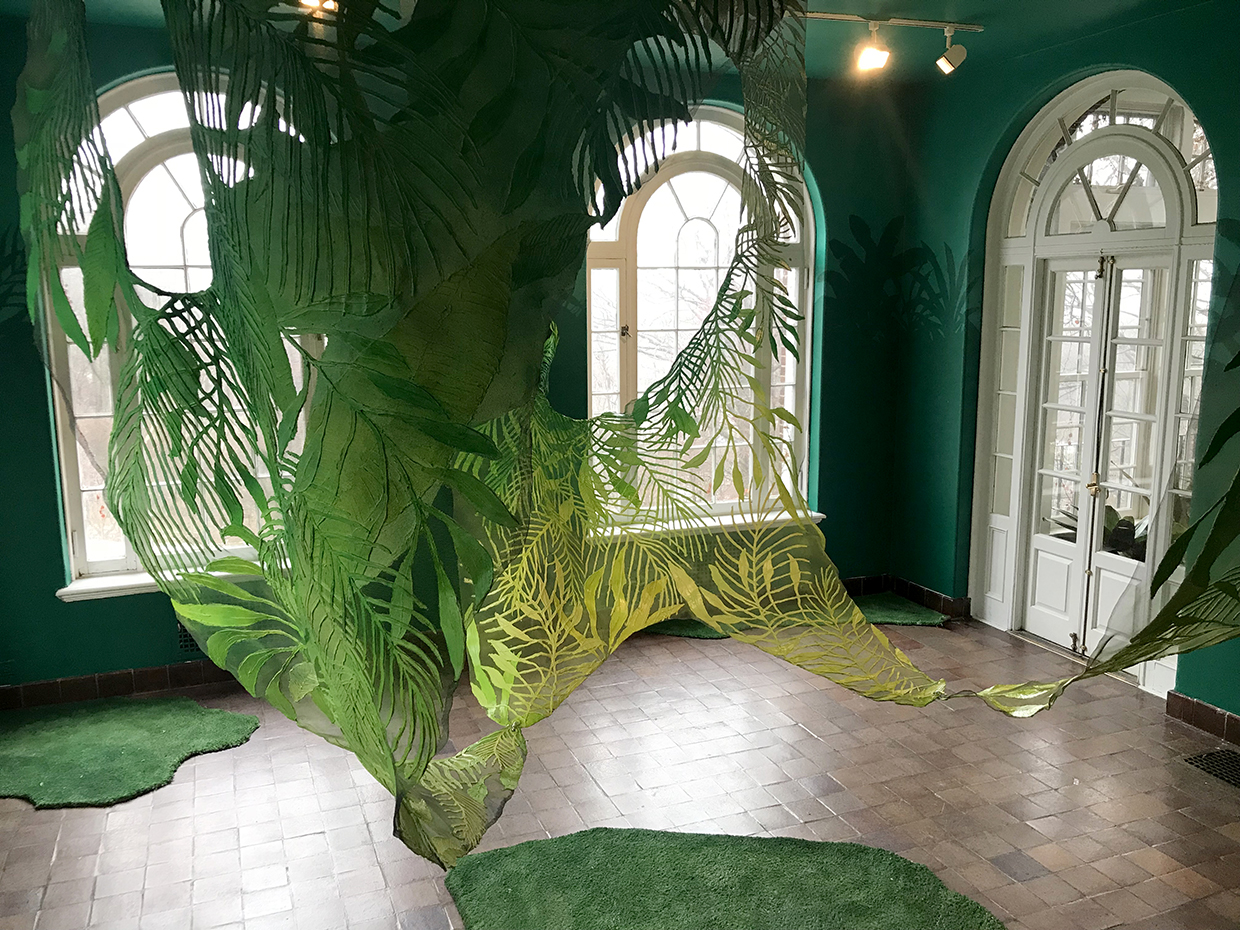
AZ: Tell us about the installation you’re exhibiting during Miami Art Week at PULSE.
AT: The piece in PULSE is called, “Origin: Fictions of Belonging.” It connects draping sheets of intersecting palms and leaves on wire mesh that hang from the ceiling. These hanging transparent works started from thinking about “veils” from W.E.B. DuBois’s description in ‘The Souls of Black Folk’ of the invisible boundaries that exists between us. It requires viewers to dip under and walk around it, tapping into the imperialistic impulse to explore and the notion of discovery that created an appetite for tropical narratives. The overly saturated, non-specific, tropical greenery, highlights the oversimplified narrative that we accept to represent much more complicated histories.
You can view Adrienne’s work on Curatious.
top image // Courtesy of the artist and Wave Hill. Photo: Stefan Hagen.

